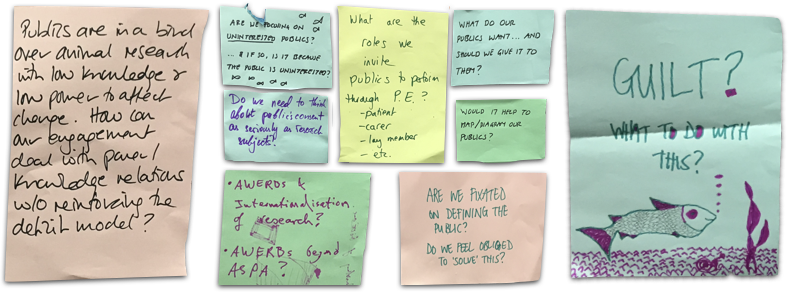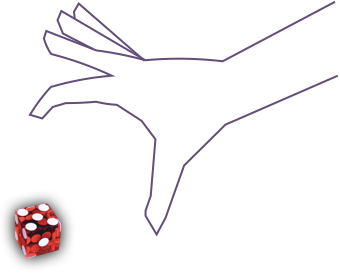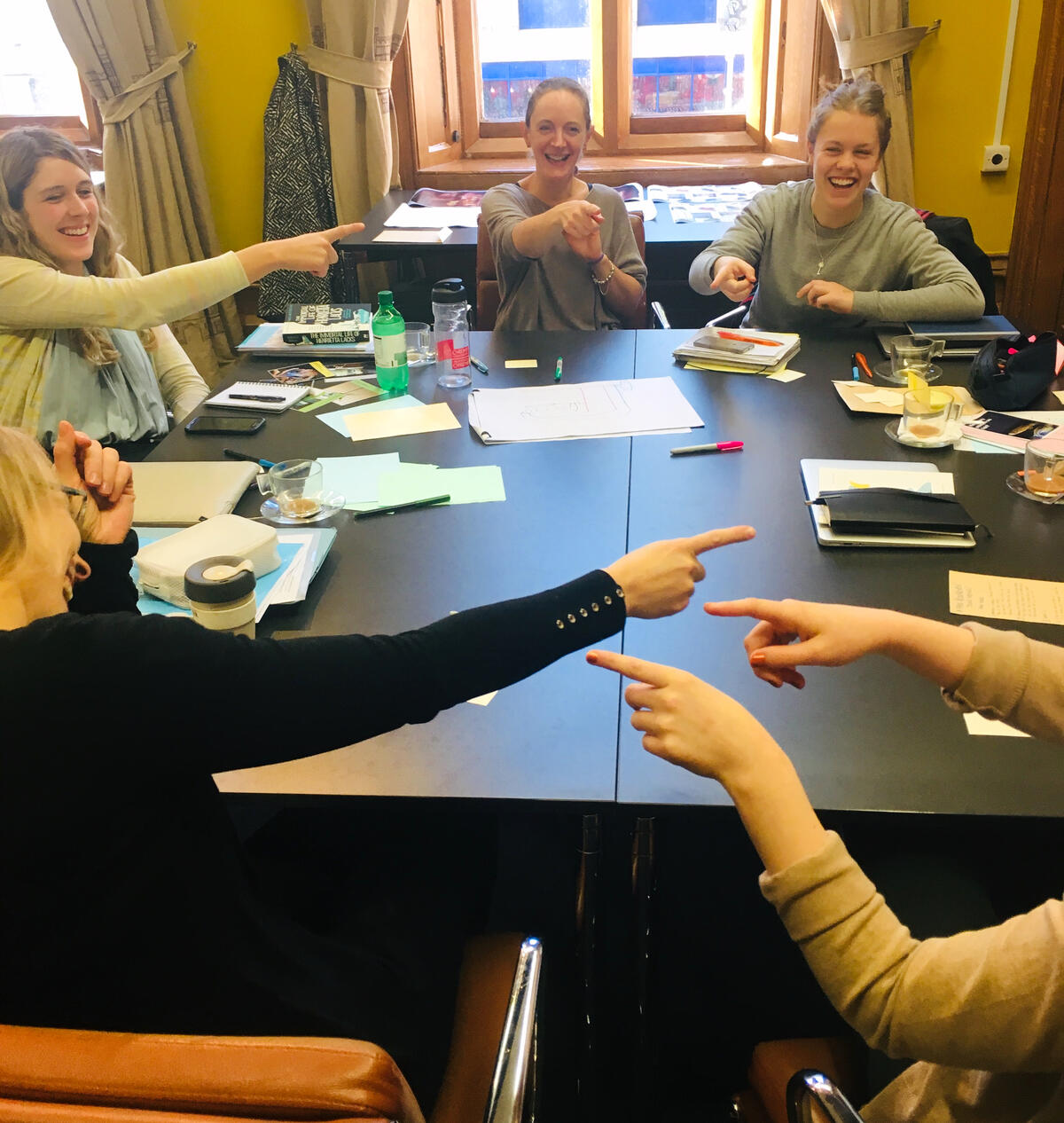Public Engagement Conference
Public Engagement Conference
Projects by Bentley
At a previous meeting we were all asked to define what “nexus” meant to us.
Nexus, to me, is a woven net where experience and knowledge twist together to form ropes. Each knot creates a node of epistemic intersection, a mutable fractal built of community, expectation and obligation Venn diagrams. It is therefore impossible to pull at one strand without disturbing others. Perhaps the metaphor of playful disturbance is what I found most appealing.
Ten months later we met again to discuss public engagement. Had we been able to purposefully loop in engagement interventions to patch up gaps in the nexus and bring new nodes together or had we just become irrevocably tangled?

Each project presented a snapshot overview of how public engagement will be used to enrich their research.
History and Cultures wants to show that things are not self-evident or inevitable by introducing complexity, ambiguity and context. Species and Spaces spoke of how sensory liberation is required if we are to remove the barriers to somatic empathy. Markets and Materials presented options to create human-non-human connections by creating spaces to perform or relate differently. People and Professions questioned what we wanted to offer the public and what hidden meanings or process of the mundane offer opportunities to make animal research less distant and dramatic. Engagement and Involvement spoke of balancing the scales between what is creative and what is comfortable and how we need to take and offer care when traversing the Nexus community.
Will these collective initiatives cover the whole animal research nexus? No, as that is impossible. However, as we are already discovering, our pilots and presence are dissipating out through the web, gently unpicking expectations and giving permission to curiosity. We have achieved a lot in the first phase of our engagement programme and there are many exciting and challenging directions in which to take it in phase two.
Publics By Renelle
Opening the two-day workshop on public engagement with a presentation on the UK animal research debate, I hoped to highlight ways in which we could enrich science-society dialogues on the issue. Yet, after spending the first year of my PhD coming to terms with the problematic ways in which public involvement in scientific-decision making has been shaped by deficit model assumptions of public ignorance requiring scientific education and the misleading homogeneity presented in the figure of ‘the public’ itself, public engagement on animal research seems like opening a huge can of worms. Thinking about doing my own public engagement swiftly delivered the lesson that it is easier to critique than create.

Nevertheless, the question of who the ‘public’ are defines the entire exercise in public engagement, how we view the public determines what we think they want to be engaged on and how we should go about this. Pluralising the collective ‘public’ into ‘publics’ allows us to be more accurate in our outward interactions and embraces the fluidity and relationality of public thought and feeling. Still, having plunged into the world of animal research and publics with no initial orientation, exploring what I even wanted to engage publics on around animal research left me feeling rather blank. Worried about how to interact with publics without following a normative approach and setting animal research up as an issue of rights or wrongs can be paralysing, but hearing and seeing how the other projects have used innovative ways to open up new conversations, manage discomforts, and help publics think with animal research was a great source of creative fuel. Coming away from the workshop with artistic envy, the most powerful message I received from the team was to remember the unit is the conversation itself and to just have a go. In a dialogue dominated by a for and against binary, creating space for new conversations around animal research in and of itself is worthwhile, and though not easy, something the AnNex team are well-placed to produce.

Games by Tess
Whilst entertaining, games can provide a mechanism to interrogate issues arising in our work. The Animal Research Nexus played three games specifically designed for this workshop: ‘NexWho’, ‘Mouse House’, and ‘A fake researcher joins Nexus’. The first encouraged us to reflect on how we, and others outside of Annex, identify ourselves, and the effects that labels and boundary-drawing can have. In my research on laboratory animal rehoming, I find many people assume I adopt a pro-animal rights stance, which may influence their responses. Our positionality is thus very important, and how our research relates both to our sense of self, and how others perceive us.
The second demonstrated the difficulty of navigating multiple ways to care, and how to prioritise differing enrichment forms. Adopting this way of thinking opened up questions surrounding needs and wants in the context of animal research, and the balance of these against scientific objectives. Care comprises a large part of my research, namely how it can lead to bond development between animals and care staff, and, ultimately, rehoming. Rehoming is not a need, but potentially a want - not only for the animal, but also for staff.
The final game was perhaps my favourite, and cleverly made use of the phenomenon of trying to ‘fit in’. Our research involves integrating the opinions of many stakeholders with potentially opposing views, and this game allowed us to experience how it felt to be the only one not understanding an idea, thus utilising our discomfort. It encouraged us to reflect on the importance of bringing together diverse views, whilst enabling tolerance and respect.
Playing games provided an effective way to reflect on the complex themes that arise in our research in a more embodied and interactive manner, and, cleverly, took us from our comfort zone. The output of the games may well have been to feel, not to know. The reflections that arose whilst playing the game did not end with the game, but are with us constantly as we conduct our research. The games simply provided a vehicle for channelling and interrogating these thoughts, encouraging us to reflect and feel in an altered way.
